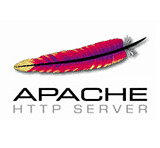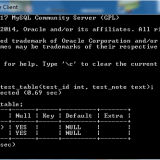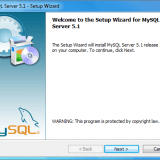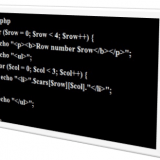Because it’s the most popular Web server in use, you might think that Apache is a complicated piece of software. but it’s not difficult at all. Installing Apache for Windows is a simple task, due in great part to the Installation Wizard distributed by the Apache Group Whether you’re using Windows 95,98,2000, XP, NT, Vista or Windows 7-8, the installation process of the precompiled binaries is definitely the way to...
Continue reading »
May 18, 2014 evirtualguru_ajaygourPHP TutorialsNo Comment
Go to the Windows Start menu, choose Run, type mysql -u root -p, and press Enter. The program will then prompt you for the password. When the MySQL, Monitor starts, it provides its own prompt. At this prompt (mysql>), you type commands used to create tables, explain tables, insert data, select data, and so on. Get used to ending your commands with a semicolon (;) because it’s...
Continue reading »
May 13, 2014 evirtualguru_ajaygourComputer Science, E-Books, Educational Software, PHP Tutorials, SQLNo Comment
When using MySQL with PHP, you’ll issue the same types of commands, only within the context of the PHP code. Starting MySQL To start MySQL manually, go to the Windows Start menu, choose Run, type c:\Program Files\MySQL\MySQL Server 5.6\bin\mysql-nt.exe And press Enter. The MySQL process will now be running in the background. you can now connect to MySQL and create database and tables. Creating a Test Database Before going any further, you...
Continue reading »
May 13, 2014 evirtualguru_ajaygourComputer Science, E-Books, Educational Software, PHP Tutorials, SQLNo Comment
MySql is the database of choice for a vast majority of Web developers who use PHP, because of its efficiency and ease of use. Plus, MySQL is free and runs on multiple platforms, and its documentation sis superb. When using MySQL and PHP, it’s easiest to install MySQL first, because during the PHP installation and configuration processes, you must tell the PHP configuration script that you plan to use MySQL, in order to activate...
Continue reading »
May 12, 2014 evirtualguru_ajaygourComputer Science, E-Books, Educational Software, PHP Tutorials, SQL3 Comments
In 1994, an incredibly forward-thinking man named Rusums Lerdorf developed a set of tools that used a parsing engine to interpret a few macros here and there. They were not extravagant : a guest book, a counter, and some other ” home page” elements that were cool when the Web was in its infancy. He eventually combined these tools with a form interpretation (FI) package he had written, added some database...
Continue reading »
May 11, 2014 evirtualguru_ajaygourComputer Science, PHP Tutorials, SQLNo Comment
Its official name is PHP : Hypertext Preprocessor, and it is a server-side language. When your Web browser accesses a URL, it is making a request to a web server. When you request a PHP page, something like http://www.yourcompany.com/home/php, the Web server wakes up the PHP parsing engine and says, ” Hey ! you’ve got to do something before I send a result back to this person’s Web browser.” Then the...
Continue reading »
May 11, 2014 evirtualguru_ajaygourComputer Science, PHP Tutorials, SQLNo Comment



























